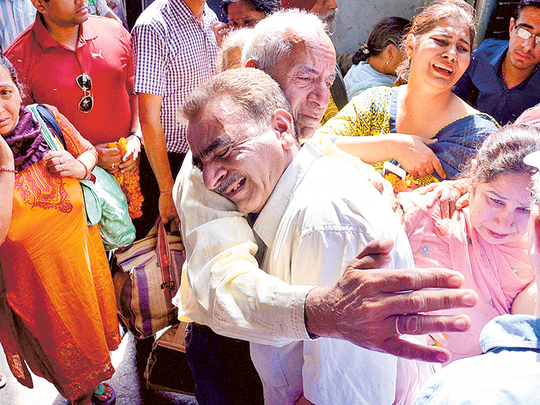
Kolkata: Fresh high intensity aftershocks post the 7.9 Richter scale earthquake in Nepal on Saturday resulted in panic all over north eastern region of India.
“There had been two high intensity earthquakes on Sunday that has sent nerves quaking among millions in this region as many fear a big one is yet to come. Many are seen sleeping outdoors and others are in a state of preparedness to leave in moment’s notice,” said Madhusudan Burman, a disaster management official in Guwahati.
The biggest reason for the panic to set in is the fact that the region had witnessed as many as 16 tremors in the last one month leading to bigger quake on Saturday.
According to the figures by Indian Meteorological Department (IMD), 16 earthquakes were significantly felt in Assam, Manipur, Meghalaya and Arunachal Pradesh, which measured to as low as 2.8 to 5.1 on the Richter scale in the West Khasi Hills district of Meghalaya on April 9.
“There was lot of talk among local folks that a big one is due anytime as mother earth is giving us enough signals of the same. However, little preparation was made by the administration,” claimed Sutapa Barui, a local resident of Shillong.
Old-timers fear that modern construction could lead to even high loss of life as the region has been prone to high seismic activity since time immortal.
The Bureau of Indian Standards (BIS) has grouped the country into four seismic zones on the basis of various scientific inputs and the Northeastern region comes under Zone V — “very severe intensity zone”, which covers about 12 per cent of the country’s geographical area.
The debate over the type of construction is bound to resurface as traditional methods of construction with light material is far safer in such areas that concrete buildings which leads to high casualty during earth quakes.
“If you see the ongoing rescue operations in Nepal, lack of town planning has become the biggest hindrance as small lanes cramped with houses have led to higher casualty. The debate will certainly bring forth the need for low cost light weight construction that is not only affordable but also life saving,” said architectural engineer Chris Charles.












